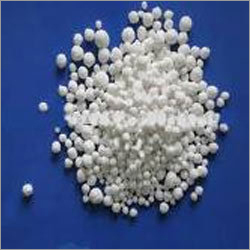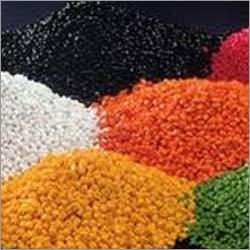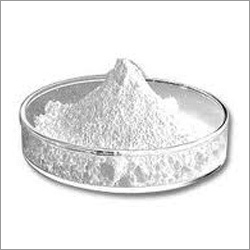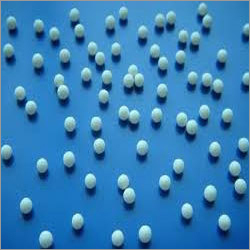Calcium Stearate
Calcium Stearate Specification
- Taste
- Neutral
- Molecular Formula
- C36H70CaO4
- Storage
- Store in a cool dry place away from moisture and heat.
- Melting Point
- 148-155C
- Ph Level
- 8-10
- Smell
- Odorless
- Heavy Metal (%)
- 0.001% max
- Molecular Weight
- 607.03 g/mol
- Loss on Drying
- 0.5% max
- HS Code
- 29157090
- Solubility
- Insoluble in water soluble in hot alcohol and organic solvents
- Boiling point
- Decomposes before boiling
- Shelf Life
- 2 years
- EINECS No
- 216-472-8
- Particle Size
- Fine powder ~1-10 m
- Structural Formula
- Ca(C18H35O2)2
- Color
- White
- Poisonous
- Non-poisonous
- Medicine Name
- Calcium Stearate
- Chemical Name
- Calcium octadecanoate
- CAS No
- 1592-23-0
- Type
- Chemical Additive
- Grade
- Industrial Grade
- Usage
- Used as a lubricant stabilizer and release agent in plastics rubber and cosmetics industries.
- Purity(%)
- 99%
- Appearance
- White powder
- Physical Form
- Solid
About Calcium Stearate
Fostered with immense domain expertise, we are engaged in offering our clients superior quality Calcium Stearate. The offered chemical is processed by heating stearic acid, fatty acid and calcium oxide. A good lubricators for pencils and crayons, this chemical is used as surface conditioner in hard candies and a waterproofing agent for fabrics. Further, offered Calcium Stearate is also used for paper and paperboard making, as it provides good glossy finish and helps in preventing dusting and fold cracking.
Features:
-
Accurate composition
- High purity
- Precise pH value
- Long shelf life
Key Characteristics and Composition
Calcium Stearate (Calcium octadecanoate, C36H70CaO4) appears as a white, fine powder, composed of particles measuring approximately 1-10 m. It is odorless, has a neutral taste, and is non-toxic, making it suitable for use in multiple industrial applications. With a high purity level of 99%, loss on drying of 0.5% max, and very low heavy metals content, its reliability and safety are assured.
Versatile Industrial Applications
Widely utilized as a lubricant, stabilizer, and release agent, Calcium Stearate serves crucial roles in the plastics, rubber, and cosmetics industries. Its physical and chemical properties enable smoother processing, improved product release, and enhanced stability during manufacturing, contributing to improved efficiency and quality of the final products.
Storage and Handling Recommendations
To ensure maximum shelf life of 2 years and maintain chemical stability, Calcium Stearate should be stored in a cool, dry environment away from moisture and heat sources. Proper storage prevents clumping and preserves the powders effectiveness throughout its usage period.
FAQs of Calcium Stearate:
Q: How is Calcium Stearate typically used in industrial applications?
A: Calcium Stearate is mainly used as a lubricant, stabilizer, and release agent in plastics, rubber, and cosmetics manufacturing. It helps to reduce friction, prevent sticking, and enhance the stability of products during processing.Q: What benefits does Calcium Stearate offer during manufacturing processes?
A: Its ability to provide lubrication and act as an anti-caking and release agent helps in smoother processing, reduces product loss during mold release, and minimizes wear on equipment, contributing to efficient and cost-effective production.Q: Where should Calcium Stearate be stored to preserve its quality?
A: For optimal preservation, store Calcium Stearate in a cool, dry location away from direct heat and moisture. This prevents degradation, maintains fine powder texture, and ensures its two-year shelf life.Q: What is the recommended process for handling Calcium Stearate safely?
A: Although Calcium Stearate is non-toxic and odorless, using personal protective equipment such as gloves and masks is advisable to avoid inhaling fine powder particles. Handle it in a well-ventilated area to avoid dust accumulation.Q: When can Calcium Stearate decompose, and what are its thermal properties?
A: Calcium Stearate has a melting point of 148-155C but decomposes before boiling. It remains stable under most industrial temperatures, but excessive heat should be avoided to prevent decomposition.Q: What is the solubility profile of Calcium Stearate?
A: This compound is insoluble in water, but it dissolves in hot alcohol and organic solvents, which can be advantageous for processing where moisture resistance is desired.Q: How does the fine particle size of Calcium Stearate contribute to its industrial utility?
A: The fine powder form (1-10 m) ensures consistent dispersion throughout mixtures, leading to uniform lubrication and stabilization across the processing batch.

Price:
- 50
- 100
- 200
- 250
- 500
- 1000+
More Products in Pharmaceutical Excipients Category
Zinc Stearate
Storage : Store in a cool dry place away from direct sunlight and moisture., Other
Chemical Name : Zinc Distearate
Medicine Name : Zinc Stearate
Purity(%) : 98%
Physical Form : Powder
Magnesium Stearate
Minimum Order Quantity : 100 Kilograms
Storage : Room Temperature
Chemical Name : Magnesium Stearate
Medicine Name : Magnesium Stearate
Purity(%) : 99%
Physical Form : Granular
Sodium Starch Glycollate
Minimum Order Quantity : 100 Kilograms
Storage : Room Temperature
Chemical Name : Sodium Starch Glycollate
Medicine Name : Sodium Starch Glycollate
Purity(%) : 99%
Physical Form : Powder
Microcrystalline Cellulose
Minimum Order Quantity : 100 Kilograms
Storage : Room Temperature
Chemical Name : Microcrystalline Cellulose
Medicine Name : Microcrystalline Cellulose
Purity(%) : 99%
Physical Form : Granular


 Send Inquiry
Send Inquiry






 Send Inquiry
Send Inquiry Send SMS
Send SMS